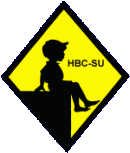
Many changes appeared in school smocks in the 1930s. One of the major changed developed in smock styling during the 1930s. Boys' smocks began to be styled with a button in the waist band at he back. The back tieing bow continued to be used, but only for girls' smocks or very little boys still in nursery school. This convention was firmly established by the mid-1930s and continued as long as boys commonly wore school smocks in the early 1960s. While this was the most common smock styles for boys. There were also side buttoning smocks. Front buttoning smocks were also worn, but were not as popular. Note that the same shorter length smocks that appeared in the 1920s continued. The smock illustration also shows the lighter-colored, pastel smocks that had by the 1930s become more popular than the dark smocks that were so common before World War I. The development of increasing diversity in smocks was an interesting development given that one of the reasons schools smocks were introduced was to give all students, rich and poor, the same appearance at school.
Many changes appeared in school smocks in the 1930s. Some of these changes related to increasing gender specialization. But there were many other changes as well. We note that both side and back buttoning smocks are common. Available images suggst that balck or dark blue smocks were by far the most commion, but we note that a few boys wore light-colored smocks and even patterened smocks. While the color was fairly uniform, we note substantial diversity in smock styling.
HBC notes in the 1930s a range of trends concerning school smocks at primary schools. We note in some schools that only some of the boys wore smocks. We have not noted primary schools where none of the boys wore smocks. At some schools all or virtually all of the boys wore smocks. We wonder if this is not an indication that the school insisted that the boys wear smocks. We note that usually where there are not school rules that often there is considerable diversity. We think in unlikely that every boy would wear a smock if it was not required. We note that in the 1930s that some boys did not wear school smocks, although it is difficult to assess how common this was with the limited information currently at hand.
We have noted a variety of specific changes.
One of the major changed developed in smock styling during the 1930s was that boys stopped wearing smocks with back bows. This change began in the 1920s, but was firmy entenched by the 1930s. Boys' smocks began to be styled with a button in the waist band at he back. The back tieing bow continued to be used, but only for girls' smocks or very little boys still in nursery school. This convention began nin the 1920s and was firmly established by the mid-1930s and continued as long as boys commonly wore school smocks in the early 1960s.
While the back-buttoning smock continued to be the most common, we note the increasing appearance of other arrangements. There were also side buttoning smocks. We first note side-buttoning smocks in he 1920s, but hey are much more prevalent in the 1930s. Front buttoning smocks were also worn, but were not as popular.
We note very few boys wearing a belt over their smocks as was very common in the earlt\y 20th century.
Note that the same shorter length smocks that appeared in the 1920s continued in the 1930s.
A much greater diversity in smock color was noted during the 1930s. The smock illustrtion above also shows a light-colored smock (figure 1). These lighter-colored pastel smocks had by the 1930s become more popular than the dark smocks that were so common before World War I.
We also noted the increasing popularity of patterened material instead of the plain black material once so common. The single most popular material was ginham (vichy).
Most French boys wore smocks without collars. In addition, boys generall wore their collars under their snocks. A few boys, however, turned their collars over their smocks.
The development of increasing diversity in smocks was an interesting development given that one of the reasons schools smocks were introduced was to give all students, rich and poor, the same appearance at school.
For whatever reason the French photographic record is not as alargev as that of many other major countries. Andv this desite the fact that photograohy was born in France with the Daguerreotype (1839). We have, however found some examples. One is an unuidentified school photograph, but clearly a school group dated 1933. It shows nine French school friends. We are not sure just what the group involves, but they clearly went to the same school. They all wear smocks, but different designs. There is some text on the back, but we are unsure about the meaning. The boys are named, but the writing is difficult to decipher. We need more examples to understand how common school smocks were and to what extent they were actually required by the schools.
